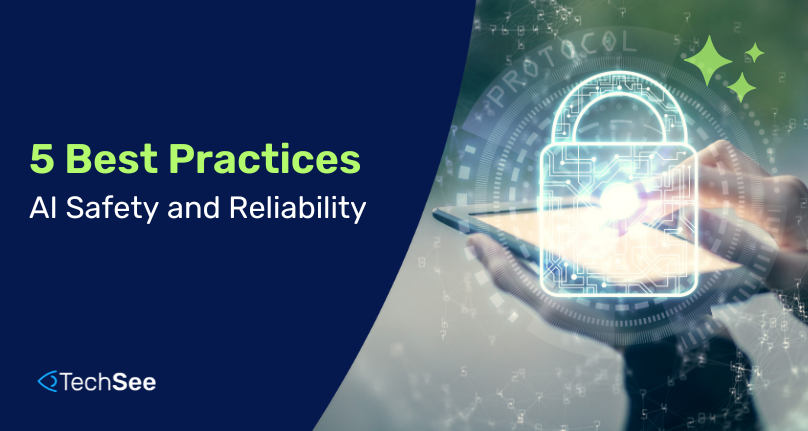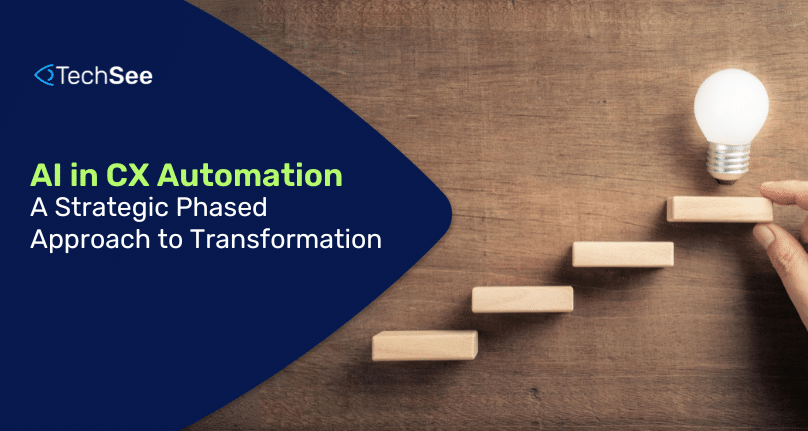Contents
In the rapidly evolving world of artificial intelligence, safety is paramount. Businesses increasingly turn to AI to streamline operations, enhance customer experience, and drive efficiency. However, as AI systems become more sophisticated, ensuring their safety becomes more complex. Sophie AI stands at the forefront of this technological revolution, offering robust solutions to ensure safety through its cutting-edge multimodal AI capabilities. In this blog post, we will explore a few of the ways that Sophie AI achieves enterprise-grade safety and reliability, as well as how you can deliver safe and effective AI solutions.
AI Safety & Reliability: It’s a Spectrum
AI safety can be viewed on a spectrum, from low-risk applications such as text analysis to more complex implementations involving generative AI. Understanding this spectrum helps businesses implement AI technologies safely and effectively.
- Text Analysis: An Easy Win
AI can provide valuable automation with minimal risk by automating tasks like reading text from an image (OCR), or summarizing a document (e.g. a service transcript). This relatively simple automation can save customers, agents, and field service technicians the unnecessary task of manually entering information, such as subscriber or product ID numbers or summarizing a service session. - Visual Journeys: Low-Risk Visual Flows
Flow-based interactions like Visual Journeys represent the next step in AI advancement and similarly pose limited safety risks. These automated flows streamline setup, warranty registration, and troubleshooting processes. For instance, a low-risk AI application could be a Visual Journey guiding a customer through the setup of a new device. These dynamic interactions visually guide users, providing step-by-step assistance along a fixed flow. The low-risk nature of Visual Journeys stems from their structured and controlled environment. They are particularly effective for customer onboarding, product setup, and issue resolution, ensuring tasks are completed correctly and efficiently.For example, a customer trying to set up a new device can use a Visual Journey that provides AR visual instructions, and visually confirms that each step has been completed successfully errors in real time. This significantly reduces the risk of user error and enhances both self-service containment rates and customer satisfaction, without posing very much AI risk. - Generative AI Assistants in the Contact Center: A Safe Starting Point
Generative AI can significantly enhance customer service operations. Many leading enterprises have strategically chosen to start their Generative AI deployment within the contact center. Generative AI can assist or augment human agents in this controlled environment by suggesting responses, automating knowledge lookup, and summarizing conversations. This controlled introduction minimizes risks while allowing for thorough monitoring and fine-tuning.Another advantage of this approach is that once the AI has proven its reliability in the contact center, it can be safely extended to direct customer interactions. This phased approach ensures that any potential issues are identified and resolved in a controlled setting before the AI interacts with end customers.
- AI Agents: The Great Leap Forward
The end goal of AI automation is to fully automate the customer experience through true AI Agents. This automation delivers incredible ROI and requires a great deal of expertise to ensure safety, reliability, and utility. In parallel, trusting an AI to directly interact with customers requires a great deal of trust in the safety and reliability of the AI. Here at TechSee, this is not something that we take lightly. For example, our customized Sophie AI Agents are trained to represent each business based on their specific branding, knowledge, experience, products, processes and more. Once proven safe and reliable in either the contact center or via direct testing, these AI Agents can interact with customers over email, social channels, chat, over the phone, and even through video. Sophie AI’s multimodal brain enables Sophie’s AI Agents to see the customer’s issue, and use AR overlays to guide users to full resolution – removing the risk of misunderstanding or miscommunications.
Best Practices for Ensuring Safe AI
- Contain Risk with a Blended AI Approach that Limits Exposure
Different AI and automation solutions pose varying degrees of safety and risk exposure. Established technologies like NLP, machine learning, knowledge graphs and computer vision will often pose lower risk than the newer, more experimental classes of Generative AI applications. Select the right AI technologies and providers for your specific requirements and risk profile. It is quite common to engage multiple AI technologies within a single solution. One way to contain the risk posed by newer AI technology is to limiti their scope within a blended-AI approach. Remember, while the latest Generative AI is incredibly powerful, it is not the ideal solution for every automation challenge or business use case. - Improve AI Safety and Reliability with Multimodal AI: Combining Vision, Text, and Voice
One of the keys to enhancing Generative AI utility without compromising safety or accuracy lies in leveraging multimodal AI. Multimodal AI combines vision, text, and voice data to comprehensively understand the user context. This approach provides a stronger signal, enabling more accurate and reliable AI responses. For example, when a customer describes an issue verbally, it can be easily misunderstood. For example, a user setting up their home fiber internet may not be familiar with the term “Optical Network Terminal” or “ONT” and simply refer to this unit as a the box. When your AI can simultaneously analyze the accompanying images or videos of the user’s issue, it can easily determine that the box is an ONT, and provide the right solution and even visual guidance that guides them to full resolution. - Ensuring Safety with Sophie AI’s Visual Intelligence
Sophie AI’s Visual Intelligence is crucial in ensuring safety across various applications. By integrating visual data analysis, Sophie AI can verify actions, detect anomalies, and provide contextual support that text-based AI alone cannot achieve.- Enhanced Accuracy and Error Detection
Visual Intelligence allows Sophie AI to cross-verify information provided by users. When a customer submits a photo of a product issue, Sophie AI can analyze the image to confirm the problem and provide accurate solutions. This capability significantly reduces the risk of errors compared to relying solely on text descriptions. - Real-Time Monitoring and Guidance
Through real-time visual monitoring and using AR overlays, Sophie AI can guide users through complex processes, ensuring each step is performed correctly. This is particularly valuable in scenarios such as remote technical support, where precise guidance is crucial. This feature empowers businesses, giving them control over complex processes managed by Generative AI.
- Closed Feedback Loop
Visual Intelligence enables Sophie AI to visually confirm that the user has successfully completed each step, ensuring real-world process compliance with virtual instructions. This is what we refer to as a “closed feedback loop.” This substantially improves both customer satisfaction and customer safety, as it ensures that the user is guided through the process correctly and can provide immediate feedback if there are any issues or errors.
- Enhanced Accuracy and Error Detection
- AI Trained on Customer Service Interactions: A Safer Approach
AI trained in customer service interactions is inherently safer because it possesses the tribal knowledge of what is and is not acceptable in customer service scenarios. Furthermore, AI trained on customer service interactions has tribal knowledge necessary to address scenarios not covered by the formal product documentation. Sophie AI is trained through an extensive and reliable process, autonomously learning from each team’s TechSee Live and other service sessions, as well as customer interaction transcripts, product documentation, and existing processes and procedures. This rigorous AI training is built on our multi-faceted approach to AI memory management, ensuring that Sophie’s AI can handle various situations with a deep understanding of appropriate responses and actions, instilling confidence in its capabilities. This reliability of the training process makes businesses secure in their choice of Sophie AI. - Prompt-Based Safety Measures
Increasingly, Generative AI applications are engaging in prompt engineering, often combined with a more established AI solution such as NLP, to improve their solutions’ safety and reliability. At its most basic, an embedded prompt can instruct a chatbot not to address questions unrelated to the product or service in question. As an embedded prompt, this instruction will not be visible to the end user but will limit the scope of what the chatbot can answer. Similarly, an AI Agent solution can insert a command into the embedded prompt instructing the AI to answer questions based only on a set of uploaded documents or to add a safety prompt that further reviews the AI’s responses before sending the responses to the user. Prompt-based safety measures can be fairly effective against basic abuse and prevent some common misunderstandings.
The best way to ensure the quality and safety of AI-based interactions is to use a multi-pronged approach that blends multiple safety measures.
Conclusion: The Future of Safe AI with Sophie
As AI evolves, ensuring its safety and reliability remain top priorities. To reach meaningful scale, today’s AI innovations must deliver enterprise-grade safety and reliability. Ensure a smooth transition into the AI era by starting with low-risk applications and progressively introducing more complex and capable AI automation. As you advance in your AI maturity, invest in delivering the safety and reliability that will deliver the confidence you need to deliver scalable performance.
To experience Sophie AI’s benefits firsthand, we invite you to schedule your complimentary demo today. We look forward to sharing more about how Sophie AI can transform your customer service operations and customer experience by providing a safe and effective AI solution.






